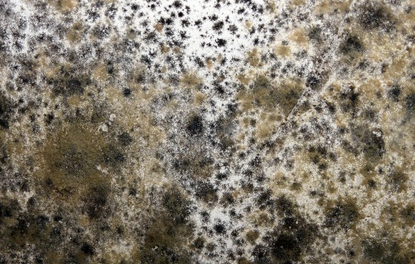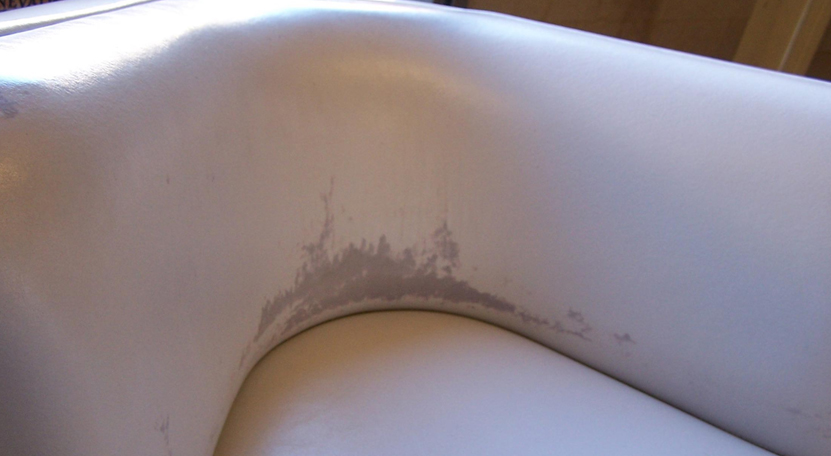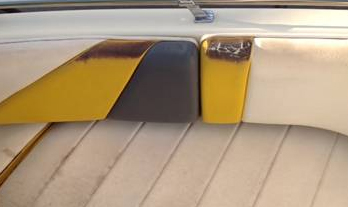
Mold & Mildew

There are many misnomers out there about mold and mildew. What causes it? What damage can it do? How do I get rid of it? And many others. Lets clear things up.
You’ve heard the expression, “An ounce of prevention is worth a pound of cure.” That’s the case with mold and mildew, especially if you own a boat or any sort of recreation vehicle that gets stored for periods of time, especially under a cover. You need to be concerned about damage those two bad boys can do to your upholstery, covers, and other materials used in the fabrication of vehicles. Why? Because mold doesn’t just stain - it can actually damage and eat away (biodegrade) materials, and that can cause even more damage and costs.

Why is mold such an imminent threat for boat owners? Because mold, or microbes as they’re also called, needs moisture and a food source (such as dirt) in order to grow. Many varieties of mold actually live in aquatic environments. And unlike most plants, mold does not require sunlight to grow. It does, however require a host on which to grow, and a host it consequently “eats” as it breaks it down and consumes the parts it wants. Your poor vinyl! Your poor upholstery! Your poor boat!!!
The stains due to mold or mildew can be pink, yellow, purple or black. These discolorations can often be mistaken for the fabric leeching its color (color rub off) onto another surface. Gross Alert! Somewhat similar to flies “throwing up” saliva on their food to begin digesting it, mold excretes a substance that breaks down and changes certain compounds to ones they can use as a food source, and that’s exactly what happens with plasticized PVC, by using the plasticizer alone as a food source. Also, areas where the plasticizer has worn out in vinyl upholstery is prime breeding ground for mold and mildew.

And just to clear the air (get it?!?) on what actually the difference is between mold and mildew . . . well, here you go: The term “mildew” is often used generically to refer to mold growth, usually that with a flat growth habit, so that it usually has a thin and dusty appearance.
HOW TO CLEAN IT:
First of all, the “not-so-good-news:” Not all mold stains are completely removable. However, with a little good advice (you’re in the right place) and some hard work, you might surprise yourself with the results, as many stains from mold and mildew will clean up nicely!
LET’S GET GOING:
• Address the source of moisture. All the cleanup in the world amounts to nothing when the problem immediately returns. Make sure the source of moisture has been eliminated: For boat covers, ensure there is adequate ventilation underneath, so moisture can escape. Don’t allow pools of water to remain, etc.
• Keep items clean. It is imperative to keep all parts of your boat or vehicle clean. Without a food source for the mold and mildew to use, it will not grow. Please take the time to clean your covers, tops and all upholstery.
• Protect Yourself: If the mold is bad, then wear protective clothing: masks, eye protection, skin protection.
• Soap Up: Scrub mold off hard surfaces with a mild to medium mixture of detergent (plain old soap is best) and water, and then let dry completely. For stubborn areas or mold you suspect hasn’t been thoroughly removed, clean again; lightly scrub using a diluted solution of bleach and water. Make sure you let the affected surfaces completely dry before re-covering. Sometimes you may need to soak the area in a diluted solution of bleach and water to properly get rid of the problem.
• Look beyond the mold: Most cover materials have a fungicide in them to eliminate mold growth on the fabric itself. But remember, mold feeds on other materials, especially dirt that may be embedded in your cover! Dirt on a synthetic host, such as polyester fabric, will become a food source for mold. Covering a moist interior with a dirt-ingrained fabric is an exercise in futility. Inspect the cover for areas where dirt has become embedded, and then take special care to clean dirt as well as mold from the fabric.
• Finally, follow the prevention practices detailed above to maintain mold and mildew-free fabrics.
Please note that some mold may cause permanent staining and cosmetic damage. It therefore may not be possible to clean an item so that its original appearance is restored. However, professional cleaners or remediators may use methods not covered here. It might also be a better (and cheaper) solution to purchase a new boat cover, in which case we ever so humbly suggest a strong and long-lasting fabric from Marlen Textiles.
CAUTION: ALWAYS FOLLOW THE MANUFACTURER’S SPECIFIC RECOMMENDATIONS ON ALLOWED CLEANING AGENTS AND PRACTICES TO AVOID LOSS OF WARRANTY. THE ABOVE IS PROVIDED AS GENERAL EDUCATION AS TO THE CAUSE, PREVENTION AND ELIMINATION OF NUISANCE MOLD AND MILDEW.
